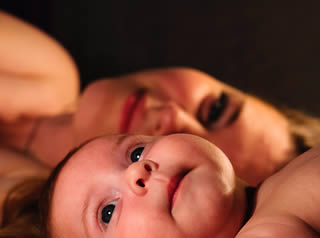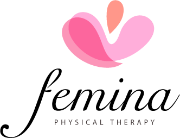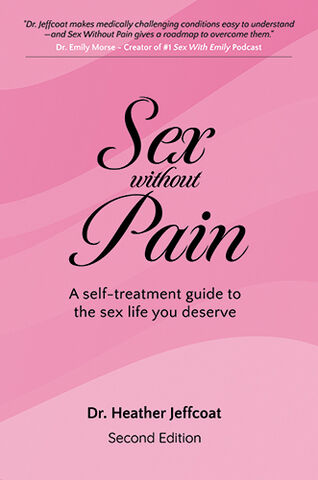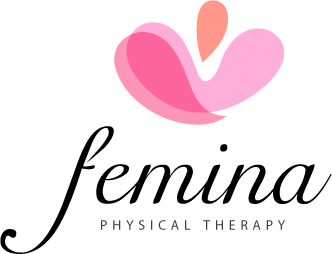Alphabetical Index of Articles on Women's Sexual, Pelvic Floor, and Reproductive Health
7 Tips for Returning to Running Postpartum

Are You Thinking of Returning to Running Postpartum?
There is not a magic time frame as each person recovers differently and the most important thing is to listen to your body.
For healthy uncomplicated pregnancies and deliveries the American College of Obstetricians and Gynecologists (ACOG) recommends women return to low-moderate intensity exercise at six weeks postpartum and eight weeks postpartum for cesarean.
After your OBGYN or midwife has cleared you to return to exercise, if you haven’t started with a Pelvic Floor Physical Therapist yet, now is a good time.
Babywearing 101: Benefits, Challenges, and Solutions for Caregivers

What is babywearing?
Babywearing is the practice of transporting a baby or child in a sling or carrier that is worn on the body - a practice that has existed for generations, and has been observed across many different cultures.
What are the benefits of babywearing?
In the first few months of an infant's life, it is required of caregivers to perform many hours of carrying, a task that may be daunting if there are other children in their household that need caring for, or other responsibilities within the home that need tending to. Of course babywearing allows caregivers to be physically close to the baby while remaining hands free, but not only this, babywearing has also been shown to have emotional, physical and psychological benefits for both infant and mother. For the infant, maternal carrying of the offspring has been shown to trigger a calming response demonstrated by central, motor and cardiac signals in distressed infants.1 There is also research to support that can improve length and success of breastfeeding, improve infant temperature regulation, and sleep apnea.
Getting Back to Exercise Postpartum

A healthy lifestyle includes getting back to exercise postpartum
Exercise has shown to be beneficial in all stages of life, and the postpartum period is no exception.
Some of the benefits of postpartum exercise are:
- Strengthen and tone abdominal muscles
- Boosts energy
- May help prevent postpartum depression
- Promotes better sleep
- Relieves stress
- Can help you lose the extra weight that you may have gained during pregnancy
(ACOG, July 2019).
Even with all these benefits, research shows that most mothers stop participating in exercise programs which leads to increased weight gain and obesity (Minig et al., and O’Toole et al., 2003). There are many adjustments that have to be made when becoming a new mother and the information on the internet regarding postpartum exercise can be misguided and overwhelming. Let's break down what the literature says about guidelines for returning to exercise postpartum.
How Is Your Running Changed After Childbirth?

What studies say about returning to running as postpartum exercise
Most of the therapists in our office are moms, and we intimately understand wanting to get back to exercise after delivery. Caution should be taken when returning to running postpartum - we see this clinically and research also shows postpartum movement strategy changes that can increase your risk of injury.
A recent pilot study by Provenzano et al., 2019 compared the biomechanical changes of runners pre-pregnancy (or <14 weeks gestation and postpartum). They found at six weeks postpartum subjects had decreased trunk and pelvic rotation, decreased running speed, with increased step width and stance time compared to pre pregnancy measurements. They also found decreased motion in the hips with increased motion at the knee as a compensation.
Motherly | Postpartum Exercise Guidelines are Changing
 Postpartum exercise guidelines have been updated by the American College of Obstetricians and Gynecologists, and while writing an article on the new guidelines for Motherly author Sydni Ellis reached out to me for my insights. Here is a brief synopsis of the article along with a link to the full article below.
Postpartum exercise guidelines have been updated by the American College of Obstetricians and Gynecologists, and while writing an article on the new guidelines for Motherly author Sydni Ellis reached out to me for my insights. Here is a brief synopsis of the article along with a link to the full article below.
Heather Jeffcoat, DPTHow Postpartum Exercise Guidelines are Changing and Why
We're not saying "Don't exercise at all!"
In the article Sydni describes the evolution of standard practice for exercising postpartum - with recommendations increasing from six weeks to twelve weeks before any strenuous activity - but with added emphasis on easing into exercise at the six week mark, all the while building to a full regimen at the twelve week mark.
She begins:
Many women can’t wait to start exercising again after pregnancy. For others, sweet baby snuggles tend to win out over exercising for the first few weeks. Once you catch up on sleep and start to gain more energy, you may be ready to do Pilates or go for a jog again—but it might not be safe to jump back in with the same intensity level in your postpartum exercise as in your pre-pregnancy routines.
...It turns out, new research backs waiting until 12 weeks postpartum to do high-intensity workouts, and many OBGYNs have adjusted their postpartum exercise recommendations acccordingly.
Motherly | When To Start Exercising Postpartum: New Guidelines Aimed at Protecting Your Pelvic Floor
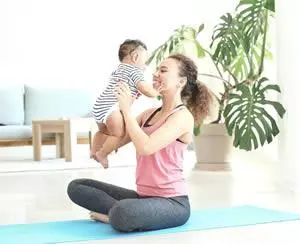 We've posted quite a large volume of information on our site about pregnancy and exercise over the years, so it's no surprise that Motherly's Sydni Ellis came calling while researching the topic of when to start exercising postpartum. Here is a brief synopsis of the article with a link to the full article below.
We've posted quite a large volume of information on our site about pregnancy and exercise over the years, so it's no surprise that Motherly's Sydni Ellis came calling while researching the topic of when to start exercising postpartum. Here is a brief synopsis of the article with a link to the full article below.
Heather JeffcoatWondering When To Start Exercising Postpartum? Exercise Guidelines Are Changing
Here’s Why Some Obgyns Recommend Waiting 12 Weeks After Birth To Workout
If you’ve just had a baby, you may be wondering when to start exercising postpartum. There is so much to keep up with when you have a newborn that it's only natural that exercise is often the last thing on your mind right after giving birth.
But once a little bit of a routine has set in, your body will (hopefully) give you some signs that it's time to step it up a bit:
Postpartum Leggings for Support and Comfort After Birth

Comfort After Birth is Possible With Postpartum Leggings
In this interview at The Bump, writer Megan Cahn went looking for "13 Best Postpartum Leggings to Support Recovery and Comfort", and she reached out to me about the benefits that postpartum leggings can present after birth. Here is an overview of the topic, with a link to the full article below.
Heather Jeffcoat, DPTBringing a new life into the world is a transformative chapter where a woman's body undergoes profound changes.
Maternity leggings provide comfort to one's growing bump, but postpartum leggings? They're like a full-body hug, providing the indispensable support and comfort your body craves as it gracefully heals.
In a recent interview with The Bump, I emphasized that:
Safely Returning to Activity and Sport | Postpartum Recovery Series - Part 1

Safely Returning to Activity and Sport Postpartum
Postpartum Recovery Part 1
Most women get the clearance after their 6 week check-up for sex and exercise, YAY! But, really? How? What does that mean? There are no guidelines on how to return to activity in a safe, leak-free and pain-free manner.
Between 6 and 31% of postpartum women experience urinary incontinence. In addition, 66% of those who experience urinary incontinence during pregnancy and/or their first 3 months of postpartum continued to experience incontinence even at 12 years after birth! As you can see, it may be common, but it is certainly not normal!
Spin the Right Way with the Help of a Therapist

Spin The Right Way for Optimal Results!
Want to start a spin class? Afraid of returning to cycling because of knee pain or pelvic pain? Come see Heather Jeffcoat, DPT, or another therapist for an assessment of your form.
We love biking at Fusion Wellness & Physical Therapy / Femina PT! We have a Peloton bicycle used to evaluate, modify and progress spinning and cycling routines. Our clinic director/owner Heather Jeffcoat, DPT, is our in-house spinning guru. She is here to help you with your form to spin the right way, as well as how to fit the bike properly to your body.



